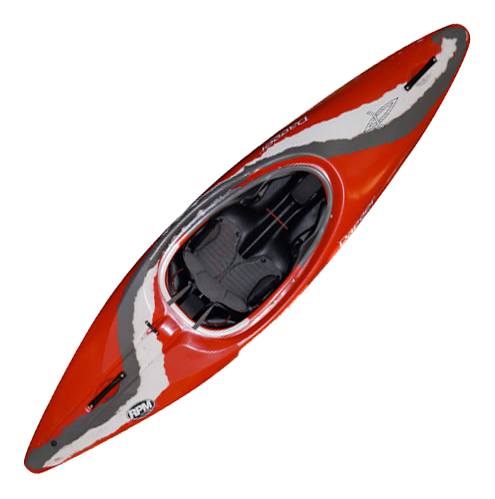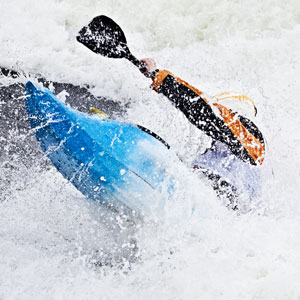[please login to make this ad block disappear]
Dagger Resurrects 17-Year-Old RPM
 Dagger Resurrects 17-Year-Old RPM
Dagger Resurrects 17-Year-Old RPM
It was at the end of the "one boat for all uses" era - you paddled creeks in the same boat you entered in a freestyle event.Rerun the Production Mold. That could well be what Dagger's RPM, at one-time the world's best-selling kayak, stands for as the company brings back one of its most popular whitewater models, whose mold has been gathering cobwebs for 17 years...
First released in 1996 in the heat of the got-to-have-it freestyle craze, the RPM quickly became Dagger's all-time best-seller, largely for its universal design. Freestylers loved it for its playability, which at the time consisted largely of cartwheels and endos, while beginners and intermediates liked it for its versatility and maneuverability (and fact that they could paddle in what the pros did). These stripes quickly led to sales. "Quite likely it was the best selling whitewater ever, but I'm not sure that anyone has ever pulled together records to prove that," says Dagger founder Joe Pulliam, crediting Steve Scarborough and Marc Lyle with its design. "It was also produced in Australia and England for many years. At one point we sold up to 8,000 a year just in the US, not including the XT, and sustained that level for several years. The Dancer sold a lot too, and I suspect it's a strong second, but its run really wasn't as long as the RPM's. I'm kinda proud that I played a role in both of them." Pulliam adds that he and Chris Spelius also played a role in the design, taking it out for near-daily tests on the nearby Ocoee River. Still harboring the original displacement hull, the new version has been updated with new safety features and Dagger's Contour Ergo Outfitting, including a thermo-molded seat with a bulkhead footbrace system, adjustable hip pads and thigh braces. According to Dagger marketing manager Jessica Prescott, production will continue for a limited time. The reason for its sales success lies with its design. "Every single surface on the boat was thought out, and every shape was there for a reason," continues Pulliam, adding that everyone loved its effortless stern squirts. "Even as Dagger and others came out with new models, and the picture was clear that flat bottoms were the future, the RPM was so easy to use that it continued to outsell everything. It was at the end of the "one boat for all uses" era....you paddled creeks in the same boat you entered in a freestyle event. We've become much more specialized now, for better or worse. "The RPM was likely the last big selling, non-planing hull boat," he adds. As for its results on the world stage, the boat was based off a prototype of the Dagger Transition, which Eric Jackson paddled to first place and Scott Shipley second at the World FReestyle Championships at the Ocoee River in 1995, a year before the boat came out in 1996. In an ironic twist, the reintroduction almost didn't happen. For most of its retirement, says Prescott, the RPM sat quietly in a corner of the mold warehouse. "During our factory move from Easley to Greenville, a few molds had to be stored briefly outside," she says. "A few days after the molds were relocated inside the new building, someone crashed their car into the area where the molds had been sitting. Had they not been moved, they could have been irreparably damaged. One of those molds was the original RPM." As for what it stands for, the jury's still out. Some say Radical Play Machine, others Revolutions Per Minute. Regardless, it's back and open for retailers to purchase. "We've heard the requests, and now we want to deliver," says Prescott. "It's a shining example of the foundation on which Dagger was built and we're proud to reintroduce it." |
Login to post here










 Get for free:
Get for free:








